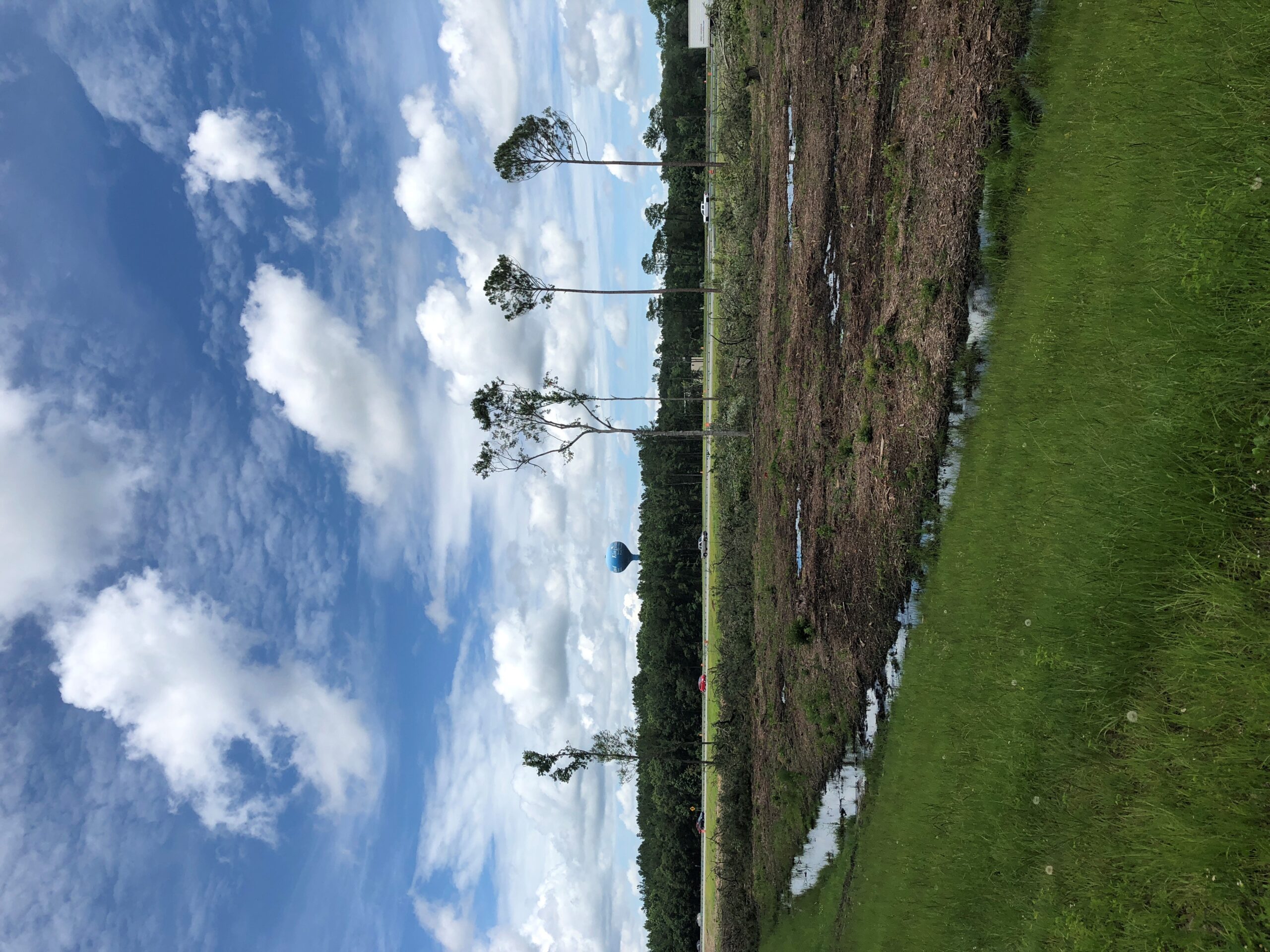Georgia DOT’s Tree Clearing Project Draws Skepticism, Complaints

The Georgia Department of Transportation is halfway through a statewide vegetation removal project. This is the exit 7 interchange on I-95, post removal.
Emma Hurt / WABE
If you’re driving around Georgia during your holiday, you may notice something. Or rather, the absence of something: trees. Georgia’s Department of Transportation is in the middle of a statewide tree-clearing project, and some people are not happy about it.
Jason Spencer, a state representative from Southeast Georgia, hears about the tree clearing a lot.
“I get phone calls from constituents, from my family, they’re going what in the hell is going on with all the trees being mowed down,” he said.
Spencer said little notice was given about the project, and his constituents are upset about the bare, swamp-like land left behind on some interstates and state highways.
GDOT said it is halfway through the two-year, statewide project about safety and vegetation maintenance.
Spokesman Natalie Dale said 60 percent of road fatalities come from lane departures, and 472 people have died from hitting trees in Georgia over the past three years. Plus, she said, the project will keep more trees from falling into roadways.
“We understand the desire to have aesthetically pleasing roadways but our commitment here is to create safer roadways,” she said. “These projects are very data-driven.”
Doug Hecox, a spokesman with the Federal Highway Administration said it is widely-accepted “that managing trees by the road is in the public’s best interest.”
“Trees are pretty and aesthetically pleasing, we understand that, but there are a variety of reasons why they’re an unsafe choice,” he said.
This is a $62.5 million project around Georgia, covering about 2,200 miles.
Rep. Spencer said questions have come up about where the trees have gone. GDOT had a timber auction for 465 acres-worth of trees from I-16, but the rest has been left to the contractors to deal with. That timber sale brought about $600,000 back to the department.
Dale said trees have been cleared in the medians and to the fence on both sides of the roads. Some, like live oaks, have been spared.
Jeff Caster, Florida’s state transportation landscape architect, said this seems different from Florida’s approach, which prioritizes keeping all the trees possible.
“We selectively remove trees, thereby leaving behind trees that are desirable and safe,” he said.
Simona Perry is the Ogeechee Riverkeeper in Savannah. She has been concerned about GDOT’s apparent lack of erosion control measures, especially along I-16.
“The state disregarded, in my opinion, good environmental practice by doing it this way,” she said. “There wasn’t a barrier to stop sediment from running into those waterways and that was alarming.”
GDOT said timber contractors were told not to disrupt soil in wetlands, so there wasn’t much need for erosion control.
The agency plans to replant grasses and wildflowers by the end of next year. Perry said she hopes they will replant with native species to most effectively keep the soil intact.
Keren Giovengo is a program manager at the University of Georgia Marine Extension and Georgia Sea Grant. She said GDOT reached out to her earlier this year, after the trees had been cleared, for her perspective on re-vegetation and vegetation management.
She said she doesn’t know what they will do, but she hopes the department will gather a group of experts to strategize about “the most ecologically and economically sustainable formulas and solutions,” especially regarding stormwater management and plant species choice.








